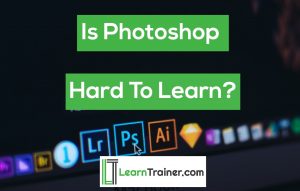Is Graphic Design Part of Marketing?
As a blog writer and a graphic designer myself, I have always been fascinated by the way these two fields intersect and work together to create successful campaigns. In this blog, we will delve into the world of graphic design and marketing, and discover how they complement each other to achieve business goals.
Graphic design and marketing are two essential components of any successful business. While they may seem like separate entities, they actually work hand in hand to achieve a common goal – to attract and engage customers.
Explanation of Graphic Design and Marketing:
Graphic design is the art of visual communication through the use of typography, images, colors, and layout. It is a creative process that involves combining text and visuals to convey a message or idea. On the other hand, marketing is the process of promoting and selling products or services to a target audience. It involves market research, advertising, and branding to attract and retain customers.
Collaborating to Achieve Marketing Goals: How They Work Together
Graphic design and marketing work together to achieve marketing goals in several ways. Firstly, graphic design plays a crucial role in creating visually appealing and attention-grabbing marketing materials such as logos, packaging, advertisements, and website designs. These designs help to capture the audience’s attention and communicate the brand’s message effectively.
Moreover, graphic design also aids in establishing a strong brand identity. Consistent use of design elements such as colors, fonts, and imagery helps to create a recognizable and memorable brand image. This, in turn, helps to build brand loyalty and trust among customers.
Examples of Successful Marketing Campaigns Using Graphic Design:
One of the most iconic examples of successful marketing campaigns that have effectively used graphic design is the “Just Do It” campaign by Nike. The simple yet powerful slogan, combined with the iconic swoosh logo, has become synonymous with the brand and has helped Nike to establish a strong brand identity.
Another example is Coca-Cola’s “Share a Coke” campaign. The brand replaced its logo with popular names on their bottles and cans, creating a personalized and engaging experience for customers. This campaign not only increased sales but also helped to strengthen the emotional connection between the brand and its customers.
Why Visual Communication Is Crucial In Marketing?
Visual communication is the use of images, symbols, and other visual elements to convey a message or idea. It is a powerful form of communication that can capture attention, evoke emotions, and leave a lasting impression on the viewer. In marketing, where the goal is to grab the attention of potential customers and persuade them to take action, visual communication is a crucial tool.
Studies have shown that people process visual information much faster than text, making it a more effective way to communicate with a target audience. In fact, 90% of the information transmitted to the brain is visual, and visuals are processed 60,000 times faster than text. This is why visual communication is essential in marketing, as it allows businesses to convey their message quickly and effectively.
How Graphic Design Aids in Visual Communication:
Graphic design is the art of combining text, images, and other visual elements to create a visual representation of an idea or message. It is a powerful tool that can help businesses communicate their brand, products, and services to their target audience. In marketing, graphic design plays a crucial role in creating effective visual communication.
Graphic design helps to make marketing materials visually appealing, which is important in capturing the attention of potential customers. It also helps to convey a message or idea in a way that is easy to understand and remember. A well-designed marketing campaign can make a lasting impression on the viewer, which can lead to increased brand recognition and customer loyalty.
Real-Life Examples of Effective Visual Communication in Marketing:
One of the best examples of effective visual communication in marketing is the Nike “Just Do It” campaign. The simple yet powerful slogan, accompanied by the iconic swoosh logo, has become synonymous with the brand and has been a key factor in Nike’s success. The use of visual elements, such as the logo and the slogan, has helped to create a strong brand identity and has made Nike stand out in a crowded market.
Another example is Coca-Cola’s “Share a Coke” campaign, where the brand replaced its logo with popular names on their bottles and cans. This visually appealing marketing campaign not only caught the attention of consumers but also created a personal connection with them, leading to increased sales and brand loyalty.
The Role of Graphic Design in Branding:
Branding encompasses the creation of a distinctive and recognizable identity for a business, product, or service.It is a crucial aspect of marketing, and graphic design plays a significant role in creating a strong brand identity. A well-designed logo, color scheme, and other visual elements can help to differentiate a brand from its competitors and make it easily recognizable to consumers.
A great example of successful branding through graphic design is Apple. The iconic logo, depicting a bitten apple, has etched itself into the global consciousness, becoming an instantly recognizable symbol. The clean and minimalist design of their products, along with consistent branding across all their marketing materials, has helped to create a strong and memorable brand identity.
The Evolution of Graphic Design in Marketing:
Graphic design has come a long way in the marketing world. With the advancement of technology, businesses now have access to a wide range of design tools and platforms that were not available before. This has opened up new possibilities for businesses to create visually stunning and impactful marketing materials.
The use of social media and digital marketing has also greatly influenced the role of graphic design in marketing. With the rise of visual-based platforms like Instagram and Pinterest, businesses are now placing more emphasis on creating visually appealing content to engage with their audience.
Graphic Design: A Catalyst for Influencing Consumer Perceptions:
The saying “a picture is worth a thousand words” holds true when it comes to graphic design in marketing. Visual elements such as colors, images, and typography have a powerful impact on how consumers perceive a brand. Studies have shown that people form their first impression of a product or brand within the first few seconds of seeing it. This is where graphic design comes into play, as it can make or break that first impression.
Effective graphic design has the ability to evoke emotions and create a connection with consumers. For example, a brand that uses bright and vibrant colors in its packaging may be perceived as fun and energetic, while a brand that uses muted tones may be seen as sophisticated and elegant. The use of images and typography can also convey a brand’s values and personality, influencing how consumers perceive the brand.
The Psychology Behind Effective Graphic Design in Marketing:
Graphic design is not just about creating visually appealing designs; it also involves understanding the psychology behind consumer behavior. Colors, for example, have a significant impact on consumer perception. For instance, red is associated with energy and excitement, while blue is associated with trust and reliability. Understanding the psychology behind color can help businesses choose the right color palette for their branding and marketing materials.
Another important aspect of effective graphic design is the use of visual hierarchy. This refers to the arrangement of elements on a design, with the most important information being given the most prominence. This helps guide the consumer’s eye and ensures that the message is conveyed effectively. Marketers also use techniques such as repetition, contrast, and balance to make their designs visually appealing and memorable.
Examples of Companies Using Graphic Design to Shape Consumer Perception:
One of the most well-known examples of a company using graphic design to shape consumer perception is Coca-Cola. The brand’s iconic logo and red and white color scheme have become synonymous with happiness and joy. The company has also used consistent branding and packaging designs to create a strong brand identity and shape consumer perception.
Another example is Apple, which has used minimalist and sleek graphic design in its branding and product packaging. This has helped position the brand as innovative and high-end, influencing how consumers perceive the company and its products.
In the beauty industry, Sephora has successfully used graphic design to shape consumer perception. The brand’s use of bold and vibrant colors in its marketing materials and in-store displays conveys a sense of fun and playfulness, appealing to its target audience of young and trendy consumers.
Benefits of Collaboration between Graphic Designers and Marketers:
Enhanced Creativity and Innovation:
When graphic designers and marketers work together, they bring their unique perspectives and skills to the table. This collaboration can lead to fresh and innovative ideas that can make a marketing campaign stand out from the rest. The designers’ creativity combined with the marketers’ strategic thinking can result in visually appealing and effective designs that capture the target audience’s attention.
Consistency in Branding:
A successful marketing campaign requires consistency in branding. Graphic designers are experts in creating visual elements that represent a brand, while marketers understand the brand’s messaging and target audience. When these two roles collaborate, they can ensure that all marketing materials, including logos, packaging, advertisements, and social media posts, are consistent in terms of design and messaging. This consistency helps in building brand recognition and trust among consumers.
Cost and Time Efficiency:
Collaboration between graphic designers and marketers can also lead to cost and time efficiency. When both roles work together from the initial stages of a marketing campaign, they can avoid any last-minute changes or revisions that may arise due to miscommunication or differences in ideas. This can save both time and money, making the campaign more efficient and effective.
How to Foster a Successful Collaboration between Graphic Designers and Marketers:
Clear Communication:
Both graphic designers and marketers should have a clear understanding of the project’s goals, target audience, and brand guidelines. Regular communication, whether through meetings or emails, can help in avoiding any misunderstandings and ensure that everyone is on the same page.
Mutual Respect:
Both roles should respect each other’s expertise and ideas. Designers should understand the importance of marketing strategies, while marketers should trust the designers’ creative vision. This mutual respect can lead to a harmonious collaboration and produce the best results.
Feedback and Criticism:
Constructive feedback and criticism are essential for any collaboration to thrive. Both graphic designers and marketers should be open to receiving and giving feedback to improve the project’s outcome. This helps in refining the designs and marketing strategies and ensures that the final product meets the client’s expectations.
Real-life Examples of Successful Collaborations in Marketing Campaigns:
Coca-Cola’s “Share a Coke” Campaign:
In 2011, Coca-Cola collaborated with graphic designers to create personalized bottles with popular names and phrases. This campaign not only increased sales but also generated a buzz on social media, with people sharing pictures of their personalized bottles. The collaboration between graphic designers and marketers helped in creating a visually appealing and successful campaign.
Nike’s “Just Do It” Campaign:
Nike’s iconic slogan “Just Do It” was created by a graphic designer and has been a part of their branding since 1988. The slogan, combined with powerful and visually striking advertisements, has made Nike one of the most successful and recognizable brands in the world. This collaboration between designers and marketers has played a significant role in Nike’s success.
Apple’s Product Launches:
Apple is known for its sleek and minimalist product designs, which have been a result of collaboration between graphic designers and marketers. The designers create visually appealing product designs, while the marketers ensure that the products are marketed effectively, creating a hype and demand for them.
Conclusion:
In conclusion, graphic design is an integral part of marketing that should not be overlooked. It has the power to elevate a brand’s image, communicate its message effectively, and ultimately drive success. So, whether you are a business owner, marketer, or graphic designer, it is crucial to recognize the value of graphic design in marketing and utilize it to its full potential for maximum impact.


